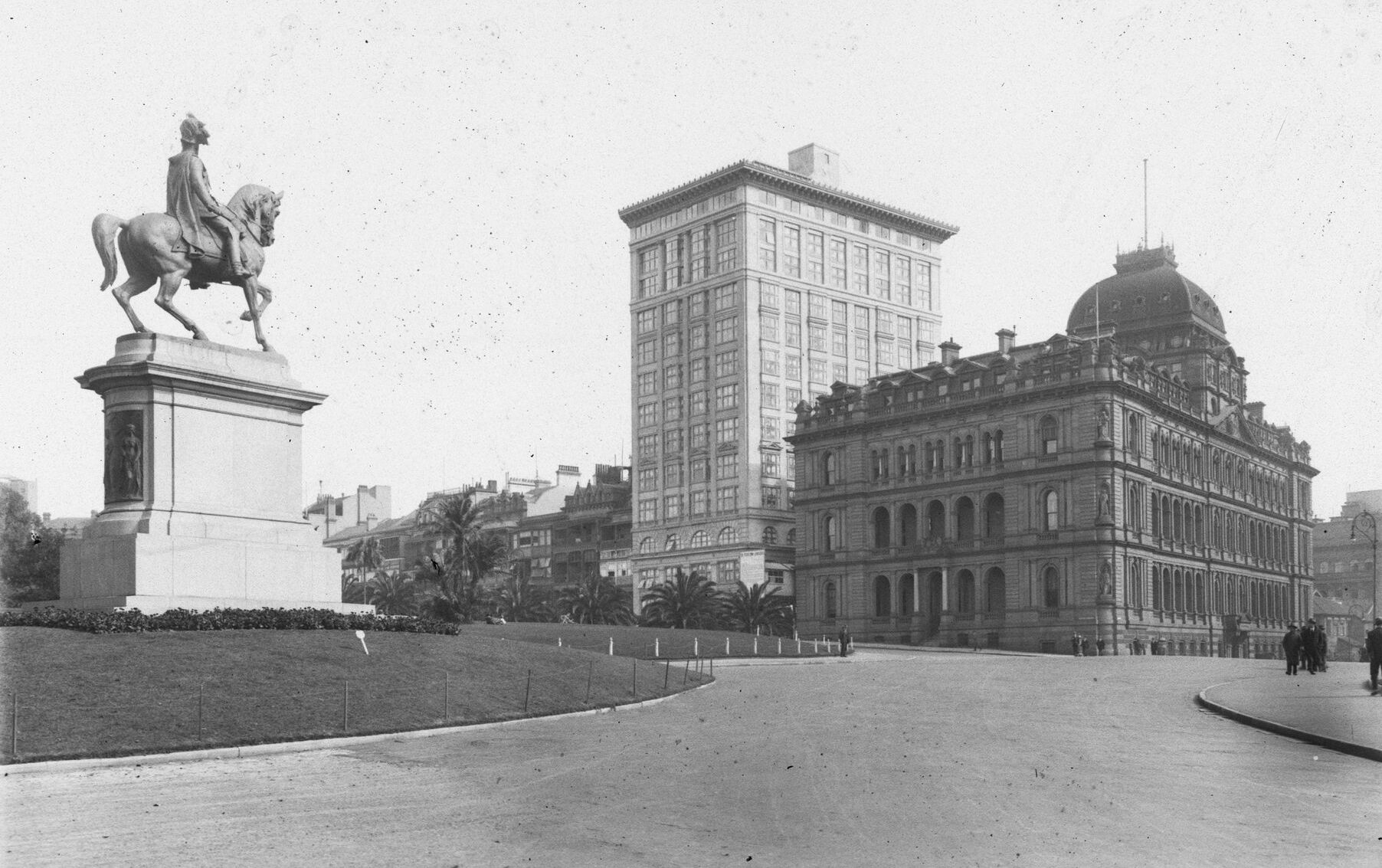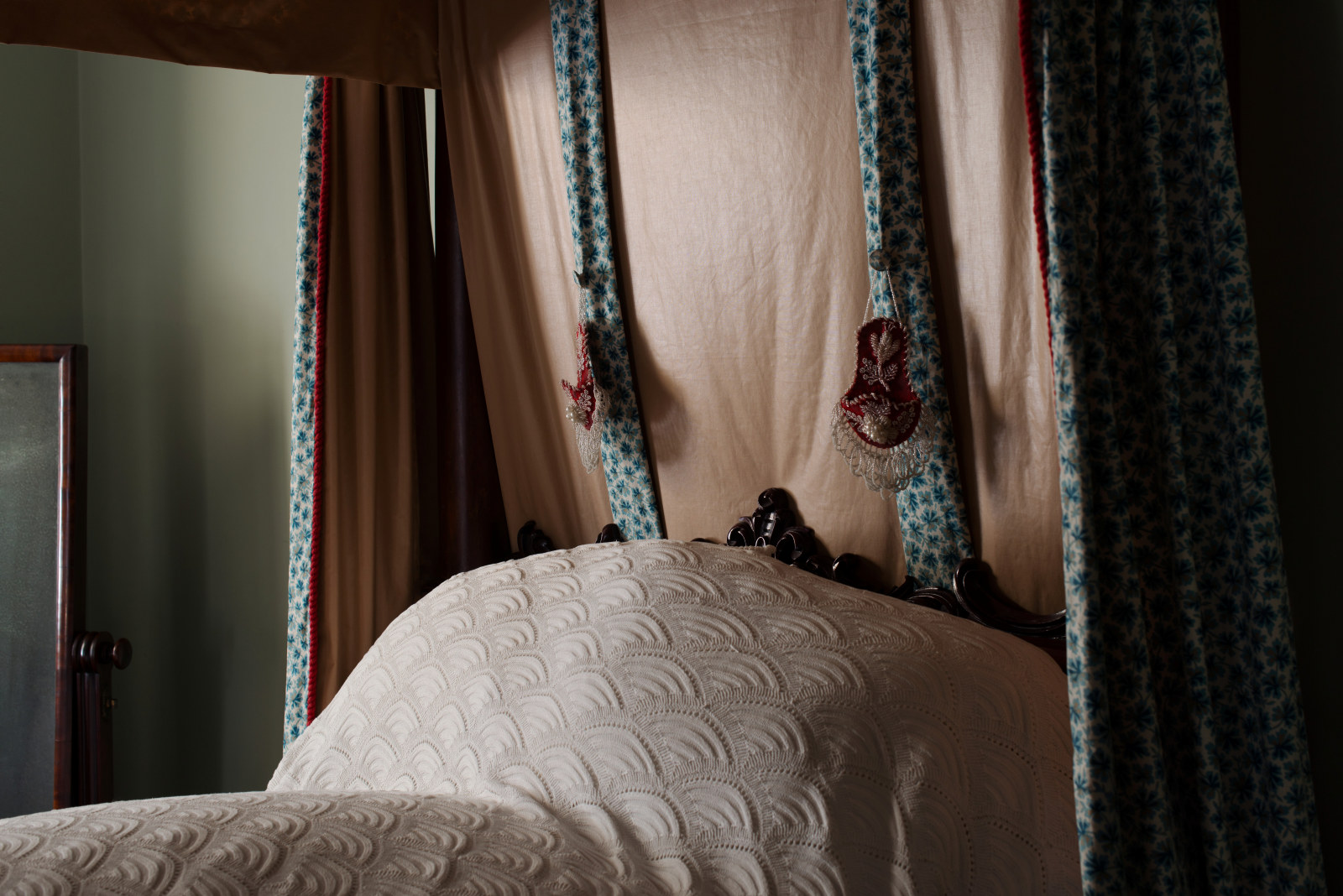Wallpaper ‘sandwich’ from Pyrmont
A ‘sandwich’ of many layers of wallpaper uncovered behind timber panelling during renovation of a small workers cottage in Union Street Pyrmont NSW, has opened a small, colourful window into the popularity of wallpaper in mid 19th century Sydney.
The cottage was built between 1842 and 1845 by a waterman turned publican named John Reed Harman. Harman sold the property to another publican, Thomas Bruffell, in 1858 and Bruffell sold in turn to politician, solicitor and substantial property owner George Wigram Allen. The Allen family remained in ownership until 1923 and the house was tenanted throughout this time. Between 1845 and 1870 there were at least nine different occupants including a butcher, watchmaker, painter, brass finisher, dealer, and master mariner. From 1871 to 1904 a confectioner named George Jansen lived in the house with his family.
The sandwich of wallpaper - each paper stuck on top of the other - was retrieved in 2004 from a room that was probably used as the parlour. It was separated out into individual layers by a paper conservator: the result was 11 different wallpapers, dating from around the early-1840s to the mid-1870s. The majority of these papers are machine-made ‘pulps’. This was the cheapest paper available, with patterns printed directly onto the surface of the wallpaper without any preparatory ground colour being applied so that the natural colour of the paper becomes part of the design. Mayes’ Australian Builders’ Price Book for 1862 lists “common pulps on self coloured paper” at just 4d to 9d per roll. The introduction of mechanisation to the wallpaper manufacturing industry after about 1840 made wallpaper readily affordable even for householders of modest means. The number of new wallpapers used in the Pyrmont cottage over a short period - perhaps a new scheme every three years – is evidence of the low-cost of wallpaper.
The most striking feature about the wallpaper is the predominance of the colour blue, a popular colour in the 1840s and 50s, and used for some decades after this in less expensive wallpaper ranges. The high turnover of residents before 1871 means that no one tenant could have been responsible for all the blue or diaper patterned papers. Perhaps it was the landlord’s taste? It is not clear. In any case, the wallpapers changed at such a rate that staring at the walls would rarely have been a boring activity for the residents of the Union Street cottage.
Arsenical green wallpaper, early 1840s
The green colour in this wallpaper was produced using arsenic. 19th century wallpaper pigments contained a host of potentially poisonous substances, but the most notorious were green-coloured wallpapers. Arsenic green (copper arsenite), also known as Scheele’s green, was used in fabrics, paint, and wallpaper throughout the 19th century and in the case of wallpaper was sometimes the cause of acute illness. Suspicions about the dangers of arsenic in wallpaper were first raised as early as the 1830s, but the exact chemical reaction that produced a dangerous gaseous emanation from the wallpaper remained a mystery until late in the 19th century when it was discovered that illness could be caused by the combination of arsenic pigment with damp and fungi living on wallpaper paste. Even then it was not until the early 20th century before arsenic was completely removed from the wallpaper manufacturing process.
Wallpaper layer 3, c1850
Eleven separate layers of wallpaper were found on the wall of a humble worker’s cottage in Pyrmont NSW. Although this may sound unusual nowadays, multiple layers of 19th and early 20th century wallpaper have often been found on the walls of Australian homes. In 1908 a Melbourne decorator claimed that ‘in the painting and repapering of the ordinary residence in and about the suburbs of Melbourne it is the usual custom… for the paperhanger to paste one paper on top of the old one without first removing the old paper.’(Australasian Decorator & Painter, 1 January 1908) According to members of the Painters’ Union in Sydney in 1909, as many as 30 layers of wallpaper had been discovered pasted one on top of the other in some homes with one member claiming that ‘were the paper scraped off the walls in some instances the rooms would be quite a foot larger’. Such layering practices came to be considered unhygienic as cleanliness in the home became an increasingly important issue in the late 19th century.
Wallpaper layer 4, c1855
Following the mechanisation of the wallpaper industry from around 1840, the price of wallpaper dropped dramatically and so could be used for regular redecoration by even modest households. English architect, C. Bruce Allen, wrote in 1857 that ‘the commoner sorts of paper now being so cheap – and with greater simplicity of pattern … the walls of every cottage living-room, at least, should be covered with it, as conducing so much to the cheerfulness and comfort of the inmates.’ (C. Bruce Allen Rudimentary treatise on cottage building: or, hints for improving the dwellings of the labouring classes, John Weale, London, 1857)
Wallpaper layer 5, c1855-60
In the second half of the 19th century, wallpapers were manufactured and retailed in different classes. ‘Pulps’ (like this example) were the cheapest available because a pattern was printed directly onto the surface of the wallpaper without any preparatory ground colour being applied, the colour of the paper itself becoming a significant part of the design. Other classes of wallpaper commonly found up until the early 20th century included: ‘grounds’, papers which had a background colour applied before the pattern was added; satins or silks; micas; flocks and golds. Each had different surface treatments and were priced accordingly.
Wallpaper layer 8, 1860s
In the mid-19th century, most wallpaper was printed using distemper colours. This meant that any soiling of the paper could not be easily cleaned – a damp cloth would wipe away both the dirt and some of the colour from the wallpaper. As a result, wallpaper could be easily damaged by fly spots, coal dust and general household grime. But because wallpaper was relatively inexpensive, it was often easier to install another layer of wallpaper than to attempt to have it cleaned.
Wallpaper layer 11, 1870s
From the mid-19th century to the beginning of the 20th century, the price of the cheapest wallpaper in Australia had barely changed and may even have become cheaper. The Australian Builders’ Price Book for 1862 lists the cheapest wallpapers, ‘common pulps on self coloured paper’ as costing from 4d to 9d per roll. In 1914 the general catalogue of Sydney department store Anthony Hordern & Sons lists ‘dark pulps’ from 3½d and ‘light pulps’ from 4d per roll.
Published on
Related

Furnishing the house museum
Explore the process of rediscovering lost and forgotten skills, along with some very modern techniques

The Astor, 1923–2023
Upon completion in 1923, The Astor in Sydney's Macquarie Stree twas the largest reinforced concrete building in Australia, the tallest residential block, and this country’s first company title residences

Watch pockets
Watch pockets hung on the head cloth of a four-post bedstead and originally served in place of bedside tables, which were uncommon in the 19th century
